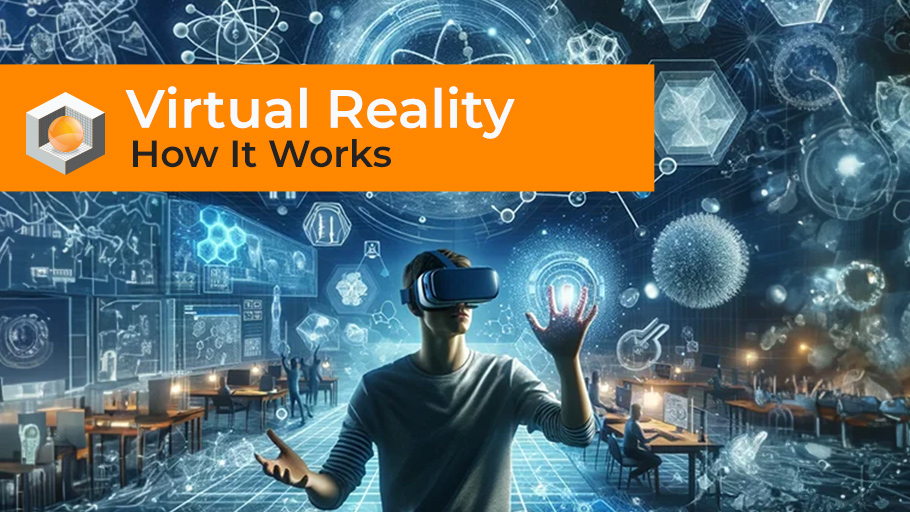Introduction to Virtual Reality
Virtual Reality (VR) technology transports users to digitally crafted environments, enabling interaction with a three-dimensional world. This immersive experience is achieved through a combination of hardware and software, including VR headsets, motion tracking devices, and interactive applications. VR’s potential extends beyond entertainment, encompassing education, design, healthcare, and more, offering unique opportunities for learning, creativity, and collaboration.
Brief History and Evolution of VR
The journey of VR began in the 1960s with the first head-mounted display system, evolving significantly over the decades. The 1980s and 1990s saw the introduction of commercial VR systems, although high costs and limited technology hindered widespread adoption. The 21st century witnessed a renaissance in VR, fueled by advancements in computing power, graphics technology, and investment from major tech companies. Today, VR offers more realistic and immersive experiences, becoming accessible to a broader audience.
Explanation of VR and Its Immersive Nature
VR creates immersive experiences by simulating a user’s physical presence in a virtual environment. This is achieved through stereoscopic displays, head tracking, and spatial audio, allowing users to perceive depth, movement, and sound as if they were truly part of the digital world. The immersive nature of VR makes it a powerful tool for storytelling, education, and remote collaboration.
At RoT STUDIO, we leverage the immersive capabilities of VR to empower users, regardless of their technical background, to create and engage with virtual content. Our platform is akin to a “LEGO set” for the VR world, providing the tools and elements necessary to construct diverse VR experiences. Whether it’s for crafting virtual worlds, hosting online meetings, or developing training and collaboration projects, RoT STUDIO offers a user-friendly interface that simplifies the creation process. Our commitment to accessibility and innovation positions RoT STUDIO as a leading platform in the VR domain, transcending physical and geographical barriers to foster unlimited creative and collaborative possibilities.
Understanding How Virtual Reality Works
Virtual Reality (VR) operates on a complex interplay of science, hardware, and software to generate immersive digital environments that replicate or surpass physical reality.
The Science Behind VR: Creating Immersive Environments
The core of VR’s immersive experience lies in its ability to deceive the human sensory system into believing in a digitally fabricated reality. This is achieved through a combination of visual, auditory, and, increasingly, haptic feedback.
VR systems employ sophisticated algorithms to render 3D environments in real-time, adjusting the perspective based on the user’s movements. This dynamic rendering creates a convincing sense of depth and space, essential for immersion. Additionally, VR leverages principles of stereoscopy, presenting slightly different images to each eye to simulate depth perception, akin to how we perceive the real world.
Hardware Components: Headsets, Motion Trackers, and Input Devices
The hardware of VR is the tangible interface through which users interact with virtual environments. The most critical piece is the VR headset, which encompasses high-resolution displays and optical lenses to present the virtual world to the user’s eyes. Headsets often integrate
- Gyroscopes
- Accelerometers
- Magnetometers
for precise head tracking, ensuring that the virtual perspective shifts naturally with the user’s movements.
Motion trackers, such as cameras and sensor-equipped gloves, capture the user’s bodily movements, translating them into virtual actions, enhancing the realism of the interaction. Input devices, including controllers, treadmills, and haptic suits, further enrich the VR experience by providing tactile feedback and facilitating complex interactions within the virtual environment.
Software Components: VR Platforms, Development Tools, and Content Creation
The software backbone of VR encompasses platforms, development tools, and content creation suites that enable the design and execution of virtual experiences. VR platforms, like RoT STUDIO, offer an accessible entry point for individuals and professionals to craft their VR content. These platforms often feature drag-and-drop interfaces, pre-built elements, and templates, democratizing the creation of VR experiences.
Development tools, including game engines like Unity and Unreal Engine, provide a more granular control over VR content creation, catering to developers and creators with technical expertise. These engines support advanced features like physics simulations, complex animations, and multiplayer functionality, essential for creating rich and interactive VR environments.
Content creation within VR extends beyond mere programming. It involves an understanding of user experience (UX) design, 3D modeling, and storytelling, all tailored to the unique demands of immersive environments. Creators must consider spatial audio, intuitive interaction models, and the avoidance of motion sickness, ensuring an engaging and comfortable VR experience.
At RoT STUDIO, we’re dedicated to making the complex world of virtual reality accessible to everyone, regardless of their technical skills. Our goal is to create a user-friendly platform where individuals can fully utilize VR without any barriers. We’ve developed intuitive tools and resources that simplify the process of creating VR content, making it as easy as pie. This opens up endless opportunities for education, design, and collaboration in the immersive world of virtual reality.
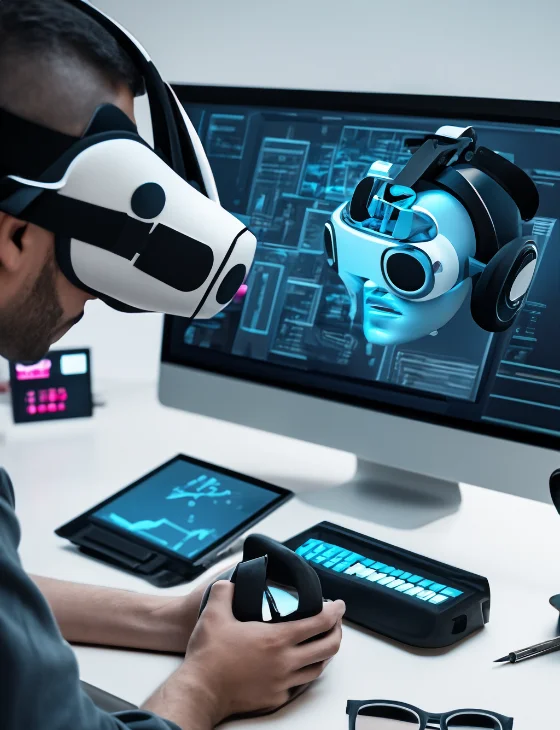
Types of Virtual Reality Experiences
The landscape of Virtual Reality (VR) is diverse, offering various levels of immersion and interactivity that cater to different needs and applications. From fully immersive environments that detach the user from the physical world to mixed realities that blend digital and physical elements, the spectrum of VR experiences is broad.
- Fully Immersive VR
- Semi-Immersive VR
- Augmented Reality (AR)
- Mixed Reality (MR)
Fully Immersive VR
Fully Immersive VR provides the most enveloping VR experience, engaging multiple senses to create a completely virtual environment that users interact with. This type of VR typically requires a headset equipped with high-resolution displays and a comprehensive tracking system, including motion sensors and haptic feedback devices, to simulate a highly realistic virtual world. In fully immersive VR, every physical movement of the user is mirrored in the virtual environment, enhancing the sense of presence. Applications range from complex training simulations in industries like aviation and medicine to immersive gaming and virtual tourism.
Semi-Immersive VR
Semi-Immersive VR offers a more accessible version of virtual reality, focusing on visual immersion while keeping some connection to the physical world. This form of VR often utilizes large projection screens or multiple monitors to display a 3D environment, accompanied by input devices like keyboards, mice, or specialized controllers for interaction. Semi-immersive VR is widely used in educational settings and architectural visualization, providing an effective balance between immersion and practicality.
Augmented Reality (AR) and Its Relation to VR
Augmented Reality (AR) differs from VR by overlaying digital information onto the real world rather than creating a wholly virtual environment. AR can be experienced through smartphones, tablets, or specialized AR glasses, adding virtual elements to the user’s physical surroundings. Although AR does not immerse users in a fully virtual world like VR, it shares similar technologies and applications. AR is instrumental in fields such as navigation, retail, and maintenance, enhancing real-world interactions with digital data.
Mixed Reality (MR): Blending Physical and Digital Worlds
Mixed Reality (MR) represents the convergence of the physical and digital realms, enabling real and virtual elements to coexist and interact in real time. MR technology recognizes and responds to physical objects, allowing for a seamless blend of real and virtual worlds. This advanced form of VR requires sophisticated devices like MR headsets, which are equipped with cameras and sensors to map the physical environment and overlay digital content. MR has significant implications for collaborative work, design, and education, providing a dynamic platform for interaction and innovation.
At RoT STUDIO, we embrace the diversity of VR experiences, offering tools and resources that cater to the full spectrum of virtual environments. From fully immersive virtual worlds to augmented and mixed realities, RoT STUDIO empowers users to create and explore without the need for advanced technical knowledge. Our platform serves as a bridge, making the vast potential of VR accessible to all, fostering creativity, learning, and collaboration across various sectors and applications.
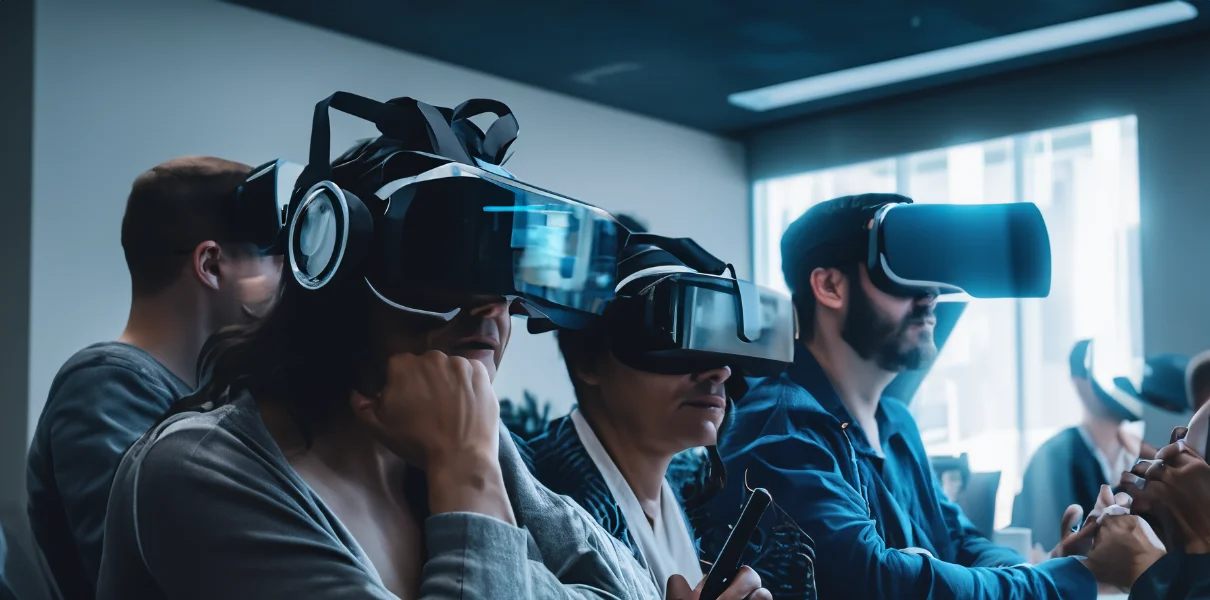
Key Technologies Driving Virtual Reality
Virtual Reality (VR) is underpinned by a suite of advanced technologies that work in concert to create immersive, interactive digital environments. These technologies range from sophisticated graphics rendering to precise motion tracking and the integration of artificial intelligence (AI). Understanding these key technologies is essential to grasp how VR achieves its remarkable feats of immersion and interactivity.
Advanced Graphics Rendering Techniques
The cornerstone of any VR experience is its visual fidelity, which relies heavily on advanced graphics rendering techniques. Real-time rendering is crucial, as it allows the virtual environment to respond instantly to user movements, ensuring a seamless and immersive experience. Techniques such as ray tracing, which simulates the way light interacts with objects to produce realistic visuals, and shader programs, which control the rendering of each pixel, are integral to creating lifelike scenes within VR. These sophisticated rendering methods require significant computational power, typically provided by high-performance GPUs.
Real-time Motion Tracking and Haptic Feedback
Real-time motion tracking is vital for aligning the user’s movements with their virtual counterpart, enhancing the sense of presence within the VR environment. This is achieved through a combination of sensors and cameras that track the position and orientation of the headset and input devices. Haptic feedback, or tactile feedback, further enriches the VR experience by providing physical sensations that mimic the textures, resistance, and impact of virtual objects. This sensory feedback is delivered through wearable devices like gloves, vests, and controllers, offering a more engaging and realistic interaction with the virtual world.
Role of AI and Machine Learning in Enhancing VR Experiences
AI and machine learning play an increasingly significant role in elevating VR experiences. These technologies enable more intelligent and adaptive virtual environments, capable of responding to user behavior in sophisticated ways. AI algorithms can generate dynamic content, such as non-player characters (NPCs) with realistic behaviors or procedurally generated landscapes, enhancing the diversity and depth of VR worlds. Machine learning can also improve the efficiency of rendering techniques, optimize VR system performance, and personalize experiences by learning from user interactions, making VR more accessible and enjoyable for a broader audience.
Applications of Virtual Reality
Virtual Reality (VR) has transcended its origins in gaming and entertainment to become a transformative technology across various sectors. Its unique ability to simulate complex, immersive environments makes it a powerful tool for education, healthcare, architecture, and beyond. This section explores the diverse applications of VR, highlighting how it is reshaping industries by offering innovative solutions for training, therapy, visualization, and exploration.
Gaming and Entertainment
The gaming and entertainment industry was among the first to adopt VR, leveraging its immersive capabilities to create engaging, interactive experiences. VR games transport players to vivid, three-dimensional worlds, offering a level of immersion and interactivity unattainable in traditional gaming. Beyond gaming, VR is revolutionizing entertainment through virtual concerts, museums, and theme parks, allowing users to experience events and attractions from the comfort of their homes.
Education and Training Simulations
VR’s potential as an educational tool is vast, offering immersive, interactive learning experiences that enhance engagement and retention. In academic settings, VR can bring historical events to life, simulate complex scientific phenomena, or provide hands-on practice in subjects like chemistry and physics without the need for physical labs. In professional training, VR simulations are used for skill development in safe, controlled environments, ideal for high-risk industries like aviation, military, and emergency response.
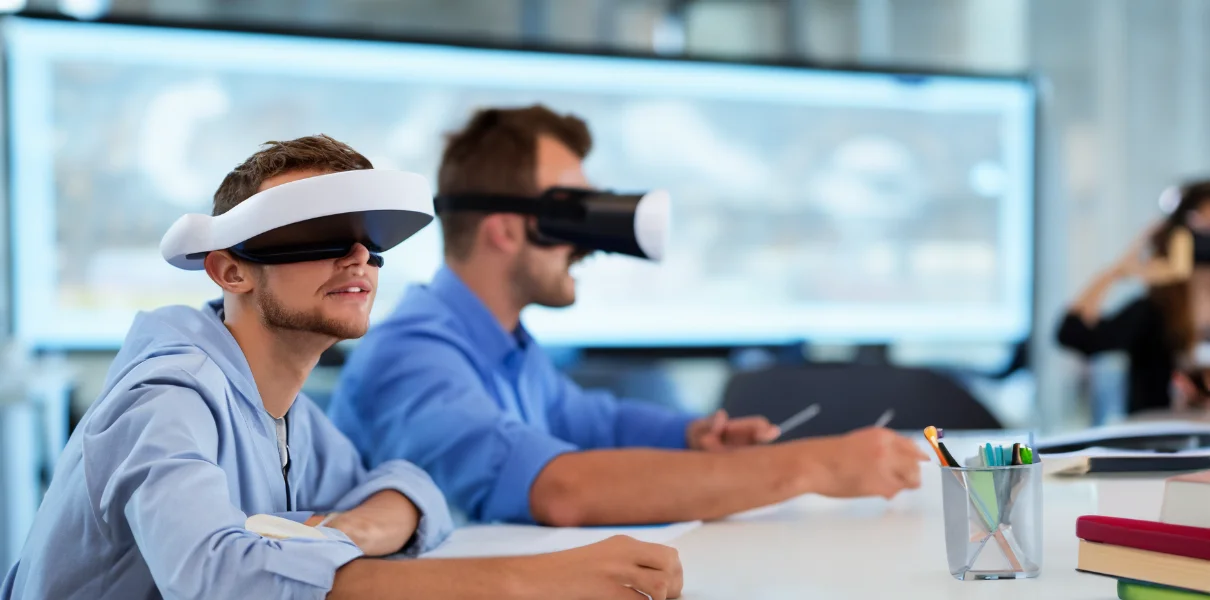
Healthcare: Surgical Training and Patient Therapy
In healthcare, VR is revolutionizing both practitioner training and patient treatment. Surgical training simulations offer medical students and professionals the opportunity to practice procedures in a risk-free, virtual setting, enhancing their skills and confidence. For patients, VR is used in therapy for conditions such as PTSD, anxiety disorders, and phobias, offering controlled environments for exposure therapy and rehabilitation. VR also plays a role in physical therapy, providing engaging exercises that promote movement and recovery.
Architecture and Real Estate Visualization
VR technology has transformed the fields of architecture and real estate, enabling professionals to create immersive 3D models of buildings and interiors. This allows architects, designers, and clients to visualize and walk through spaces before they are built, facilitating better design decisions and client communication. In real estate, VR tours provide potential buyers with a realistic experience of properties, enhancing the buying process and expanding market reach.
Virtual Travel and Tourism
VR offers the opportunity to travel and explore destinations from anywhere in the world, breaking down geographical and financial barriers. Virtual tours of landmarks, natural wonders, and museums provide an accessible way for people to experience new cultures and locations. This not only enriches personal knowledge and understanding but also has the potential to promote global heritage and conservation efforts.
At RoT STUDIO, we recognize the transformative power of VR across these diverse applications. Our platform is designed to democratize access to VR creation, enabling individuals and organizations to craft their own VR experiences without the need for extensive technical knowledge. Whether for gaming, education, healthcare, architectural visualization, or virtual travel, RoT STUDIO provides the tools and support necessary to bring innovative VR projects to life, fostering a new era of immersive digital experiences.
The Impact of Virtual Reality on Society
Virtual Reality (VR) is not just a technological innovation; it’s a societal shift, reshaping how we learn, work, and connect. The immersive nature of VR has profound implications for education, professional training, remote collaboration, entertainment, and social interactions. By breaking down traditional barriers of distance and physical limitations, VR is fostering new ways of experiencing and interacting with the world around us.
Transforming Education and Professional Training
VR is revolutionizing the educational landscape and professional training by providing immersive, interactive learning experiences that were once unimaginable. In education, VR enables students to explore ancient civilizations, dissect complex biological structures, or traverse the solar system, making learning a dynamic and engaging process. For professional training, VR simulations offer realistic, hands-on practice in safe, controlled environments. Fields such as aviation, medicine, and manufacturing benefit from VR’s ability to simulate real-world scenarios, allowing trainees to hone their skills without the risks associated with physical training.
Enhancing Remote Collaboration and Virtual Meetings
The advent of VR has transformed remote collaboration, making virtual meetings more interactive and engaging. With VR, participants can share a common virtual space, enhancing communication and teamwork across distances. This capability is invaluable for global teams and projects that require close collaboration without the possibility of physical presence. VR meetings can simulate the experience of face-to-face interactions, complete with non-verbal cues and a sense of shared space, fostering a stronger connection and understanding among participants.
The Future of Entertainment and Social Interaction
VR is redefining the realms of entertainment and social interaction, offering new ways to experience media and connect with others. In entertainment, VR brings audiences into the heart of stories and games, creating a level of immersion and participation that traditional media cannot match. Social VR platforms allow users to interact in virtual spaces, attend events, and meet new people without geographical constraints. This opens up new possibilities for socializing, networking, and community building, transcending the limitations of the physical world.
At RoT STUDIO, we are acutely aware of VR’s transformative potential and its impact on society. Our platform is designed to empower users to create and explore VR experiences, contributing to the ongoing evolution of how we learn, collaborate, and connect. By providing intuitive tools and resources, RoT STUDIO is committed to making VR accessible to all, enabling individuals and organizations to harness the full potential of this groundbreaking technology. As we continue to explore and expand the boundaries of virtual reality, we look forward to seeing how VR will further shape our society and the myriad ways in which we interact with the world and each other.
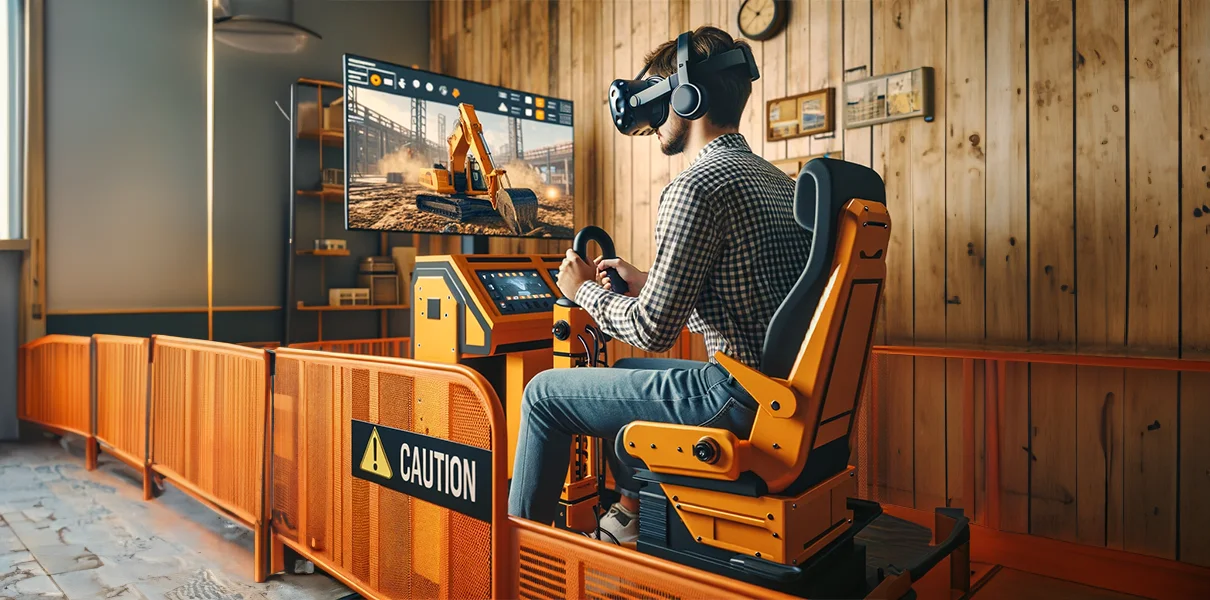
The Future of Virtual Reality
As we look toward the horizon, the future of Virtual Reality (VR) shines with promise, characterized by rapid advancements, integration with other cutting-edge technologies, and a pivotal role in crafting the digital landscapes of tomorrow. The potential for VR to transcend its current capabilities and redefine our digital interactions is immense, driven by emerging trends, technological synergies, and its intrinsic capacity to innovate.
Emerging Trends and Future Technologies in VR
The trajectory of VR is marked by several emerging trends and future technologies poised to enhance its immersion, accessibility, and application. Among these advancements are ultra-high-resolution displays and next-generation haptic feedback systems, which aim to heighten the sensory fidelity of VR experiences. Wireless VR headsets with extended battery life and improved field of view are expected to become the norm, eliminating physical constraints and fostering greater freedom of movement.
Artificial Intelligence (AI) and machine learning are set to play a crucial role in creating more dynamic and responsive virtual environments, capable of adapting in real-time to user interactions. Furthermore, advancements in eye-tracking and facial expression recognition will enable more nuanced and authentic social interactions within VR, mirroring the complexity of human communication.
Integration with Other Technologies: IoT, Blockchain, and Beyond
The convergence of VR with other technologies like the Internet of Things (IoT), blockchain, and 5G connectivity is set to unlock new dimensions of functionality and application. IoT integration will allow VR systems to interact seamlessly with smart environments, enabling users to control and receive feedback from physical devices within virtual spaces. This synergy could revolutionize fields such as remote work, smart home management, and interactive learning.
Blockchain technology offers the potential for secure, decentralized virtual economies within VR platforms, where users can trade assets, own virtual land, and establish digital identities with verifiable ownership and provenance. This integration could lead to entirely new business models and community-driven virtual experiences.
The Role of VR in Shaping Future Digital Landscapes
VR stands at the forefront of shaping future digital landscapes, heralding a shift towards more immersive, interactive, and personalized digital experiences. As VR becomes increasingly integrated into daily life, it will play a pivotal role in the evolution of the metaverse—a collective, shared virtual space that is poised to become the next iteration of the internet. This digital frontier will offer unprecedented opportunities for collaboration, creativity, and community, transcending physical boundaries and redefining what is possible in the digital realm.
At RoT STUDIO, we are committed to being at the vanguard of these developments, continuously evolving our platform to leverage the latest advancements in VR technology. Our mission is to empower users to not only navigate the future digital landscape but to actively shape it. By providing the tools and support needed to create innovative VR experiences, RoT STUDIO aims to foster a community of creators, innovators, and explorers who will define the future of virtual reality and its role in our digital lives.

